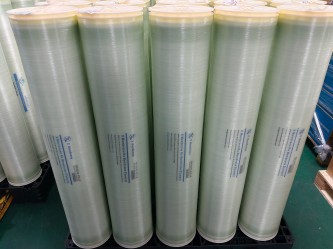Seawater Desalination Membranes: Providing Reliable Freshwater in Water-Scarce Regions
November 01, 2024
1. How Seawater Desalination Membranes Work
Seawater desalination membranes use reverse osmosis technology, where high pressure forces seawater through the membrane, filtering out salt, heavy metals, and microorganisms while retaining only freshwater molecules. The specialized material and structure of seawater desalination membranes allow them to efficiently separate salt, ensuring high freshwater output and quality, even in high-salinity environments.

2. Key Applications of Seawater Desalination Membranes
Seawater desalination membranes provide a vital solution for areas facing water scarcity. Key applications include:
- Islands and Coastal Cities: Seawater desalination equipment Reliable sources of drinking water where freshwater resources are limited.
- Industrial desalination Production: Ensures access to high-purity freshwater needed for factories, such as power plant cooling and pharmaceutical industries.
- Agricultural Irrigation: Provides cost-effective, high-quality irrigation water, reducing freshwater resource depletion.
3. Advantages of Seawater Desalination Membranes
High-quality seawater desalination membranes offer several benefits:
- High Corrosion Resistance: Designed to withstand high-salinity environments, reducing replacement frequency.
- High Salt Rejection Rate: Efficiently removes salt and other dissolved contaminants, meeting potable water standards.
- Lower Energy Consumption: Optimized membrane designs reduce operating costs, providing a cost-effective freshwater solution for businesses and communities.
4. The Future of Seawater Desalination Membranes
With the global demand for water resources growing, desalination will become increasingly important in water management. Using seawater desalination membranes for desalination is an environmentally friendly solution, providing sustainable freshwater resources for coastal and arid regions.
Conclusion
Seawater desalination membranes play a key role in addressing global water scarcity, providing a crucial means for coastal and water-stressed areas to access freshwater. Choosing efficient desalination membranes meets diverse water quality needs while lowering operating costs, supporting the future of water conservation.





 Language
Language




 Network Supported
Network Supported